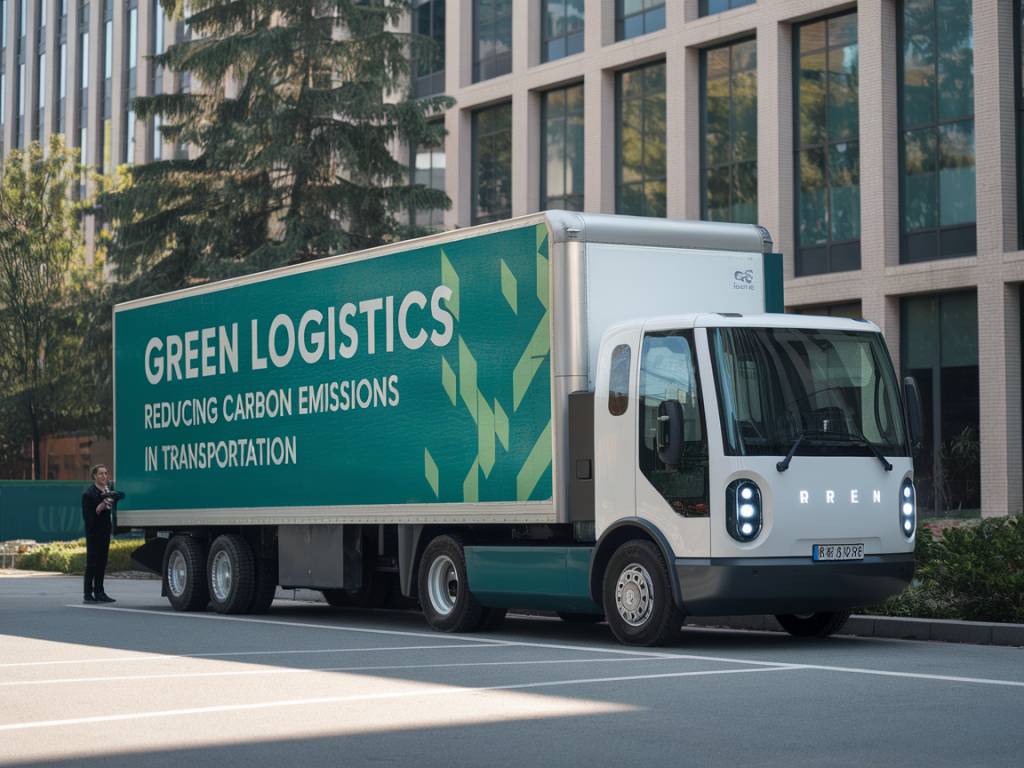In today’s world, the need for sustainable practices in every industry is becoming increasingly important. One sector where sustainability can make a significant impact is logistics and transportation. The concept of Green Logistics aims to reduce the carbon emissions associated with the transportation of goods, addressing the environmental challenges posed by traditional logistics methods. This article delves into the strategies, technologies, and best practices for reducing carbon emissions in transportation through the adoption of Green Logistics.
What is Green Logistics?
Green Logistics refers to the optimization of supply chain activities to minimize their environmental footprint. This involves the integration of sustainable practices and technologies to reduce greenhouse gas emissions, energy consumption, and waste production. By adopting Green Logistics, companies can enhance their operational efficiency, improve their corporate social responsibility (CSR) credentials, and comply with regulatory requirements more effectively.
The Environmental Impact of Traditional Logistics
Traditional logistics operations rely heavily on fossil fuels, leading to substantial greenhouse gas emissions. The transportation sector is one of the largest contributors to global pollution, with road transport accounting for the majority of the emissions. Additionally, logistics activities often involve significant energy consumption, waste generation, and resource depletion. These factors collectively contribute to climate change, air pollution, and other environmental issues.
Key Strategies for Implementing Green Logistics
To reduce the carbon emissions in transportation, several strategies can be implemented within the realm of Green Logistics. These strategies not only mitigate environmental impact but also improve cost efficiency and operational productivity.
Adoption of Alternative Fuels
One of the most effective ways to reduce carbon emissions is through the adoption of alternative fuels. Electric vehicles (EVs), hydrogen fuel cells, and biofuels are gaining traction as viable alternatives to conventional fossil fuels. Companies are increasingly investing in EVs for their delivery fleets, which offer the dual benefits of zero emissions and lower operating costs.
Optimization of Transport Routes
Optimizing transport routes can significantly reduce fuel consumption and emissions. Advanced route planning software uses real-time data and predictive analytics to identify the most efficient routes, reducing unnecessary mileage and idle time. This not only cuts down emissions but also enhances delivery speed and reliability.
Implementation of Eco-Friendly Packaging
Eco-friendly packaging reduces the overall environmental impact of logistics operations. Lightweight, recyclable, and biodegradable packaging materials help minimize waste generation and energy consumption. Companies are increasingly adopting sustainable packaging solutions to align with eco-friendly practices and consumer preferences.
Investment in Energy-Efficient Warehousing
Warehousing operations can also be optimized to support Green Logistics. Implementing energy-efficient lighting, heating, ventilation, and air conditioning (HVAC) systems reduces energy consumption. Additionally, automation and the use of renewable energy sources like solar panels can further enhance the sustainability of warehouse operations.
Utilization of Collaborative Logistics
Collaborative logistics involves sharing transportation resources and infrastructure with other companies to achieve greater efficiency. This practice reduces the number of vehicles on the road, lowers fuel consumption, and cuts emissions. Collaborative logistics can take various forms, such as co-loading, joint distribution centers, and shared transportation networks.
Smart Transportation Systems
Technology plays a crucial role in Green Logistics. Smart transportation systems leverage Internet of Things (IoT) devices, telematics, and artificial intelligence (AI) to monitor and manage logistics operations in real-time. These systems provide valuable insights into fuel consumption, vehicle performance, and driver behavior, enabling companies to make data-driven decisions to reduce emissions.
Benefits of Green Logistics
Embracing Green Logistics offers numerous benefits beyond environmental sustainability. These include:
- Cost Savings: By reducing fuel consumption, optimizing routes, and utilizing energy-efficient technologies, companies can achieve significant cost savings.
- Enhanced Brand Image: Consumers today are more environmentally conscious and prefer brands that demonstrate a commitment to sustainability. Green Logistics enhances a company’s brand image and reputation.
- Regulatory Compliance: Governments worldwide are implementing stricter environmental regulations. Adopting Green Logistics ensures compliance with these regulations and avoids potential penalties.
- Operational Efficiency: Sustainable practices often lead to improved operational efficiency, reduced wastage, and better resource management.
- Competitive Advantage: Companies that prioritize sustainability gain a competitive edge in the market, attracting environmentally-conscious consumers and business partners.
Real-World Examples of Green Logistics
Many leading companies have successfully implemented Green Logistics practices, setting examples for others to follow. Here are a few notable examples:
- UPS: UPS has invested heavily in alternative fuel vehicles, including electric and hybrid trucks. The company has also optimized its delivery routes using advanced software, significantly reducing its carbon footprint.
- Amazon: Amazon is deploying electric delivery vans as part of its commitment to achieve net-zero carbon emissions by 2040. The company is also investing in renewable energy projects and sustainable packaging solutions.
- DHL: DHL has implemented the « GoGreen » program, aiming to achieve zero emissions logistics by 2050. The company uses alternative fuels, energy-efficient warehouses, and carbon offset initiatives to reduce its environmental impact.
The Future of Green Logistics
The future of Green Logistics looks promising as companies, governments, and consumers become more aware of the need for sustainable practices. Technological advancements will continue to play a significant role in driving the adoption of Green Logistics. Innovations in electric and autonomous vehicles, renewable energy sources, and smart logistics systems will further enhance the efficiency and sustainability of transportation operations.
Besides technology, policy frameworks and industry collaborations will be crucial in accelerating the shift towards Green Logistics. Governments can incentivize the adoption of eco-friendly practices through subsidies, tax breaks, and stricter emissions regulations. Industry collaborations can lead to the development of shared infrastructure and resources, reducing the overall environmental impact.
In conclusion, Green Logistics represents a vital step towards a more sustainable future in the transportation and logistics sector. By adopting alternative fuels, optimizing routes, implementing eco-friendly packaging, investing in energy-efficient warehousing, and leveraging smart transportation systems, companies can significantly reduce their carbon emissions. The benefits of Green Logistics extend beyond environmental sustainability, offering cost savings, enhanced brand image, regulatory compliance, and improved operational efficiency. As technology advances and awareness grows, Green Logistics will become the norm, paving the way for a greener and more efficient logistics industry.



